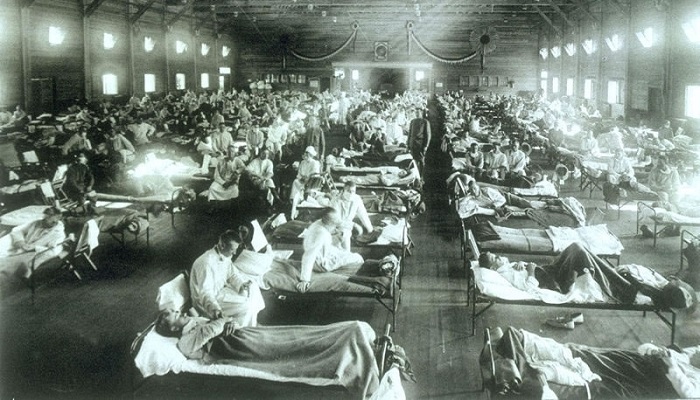Przejdź do trybu offline z Player FM !
1918 Flu Pandemic Lessons
Manage episode 229729621 series 6834

BOB HIRSHON (host):
A century of flu lessons. I’m Bob Hirshon and this is Science Update.
100 years ago, the 1918 influenza pandemic claimed more than 50 million lives.
CAROLIEN VAN DE SANDT (Doherty Institute/University of Melbourne):
And it’s actually the most deadly pandemic that has ever occured in human history. 1
HIRSHON:
University of Melbourne researcher Carolien van de Sandt says we’re still at risk for new pandemics. In order to better prepare, her team has analyzed what made the 1918 flu so deadly. They write in Frontiers in Cellular and Infection Microbiology that mutations to the virus sent immune systems into overdrive, and also made it more transmissible. Young adults were most at risk then, but today, malnutrition, obesity, and secondary bacterial infections could make a pandemic more deadly for some. What’s more, climate change affects where new flu strains emerge.
VAN DE SANDT:
It’s hard to believe how bad it can be and maybe we underestimate it a little bit. 3
HIRSHON:
I’m Bob Hirshon, for AAAS, the science society.
Story by Susanne Bard
The post 1918 Flu Pandemic Lessons appeared first on Science Update.
668 odcinków
Manage episode 229729621 series 6834

BOB HIRSHON (host):
A century of flu lessons. I’m Bob Hirshon and this is Science Update.
100 years ago, the 1918 influenza pandemic claimed more than 50 million lives.
CAROLIEN VAN DE SANDT (Doherty Institute/University of Melbourne):
And it’s actually the most deadly pandemic that has ever occured in human history. 1
HIRSHON:
University of Melbourne researcher Carolien van de Sandt says we’re still at risk for new pandemics. In order to better prepare, her team has analyzed what made the 1918 flu so deadly. They write in Frontiers in Cellular and Infection Microbiology that mutations to the virus sent immune systems into overdrive, and also made it more transmissible. Young adults were most at risk then, but today, malnutrition, obesity, and secondary bacterial infections could make a pandemic more deadly for some. What’s more, climate change affects where new flu strains emerge.
VAN DE SANDT:
It’s hard to believe how bad it can be and maybe we underestimate it a little bit. 3
HIRSHON:
I’m Bob Hirshon, for AAAS, the science society.
Story by Susanne Bard
The post 1918 Flu Pandemic Lessons appeared first on Science Update.
668 odcinków
Wszystkie odcinki
×Zapraszamy w Player FM
Odtwarzacz FM skanuje sieć w poszukiwaniu wysokiej jakości podcastów, abyś mógł się nią cieszyć już teraz. To najlepsza aplikacja do podcastów, działająca na Androidzie, iPhonie i Internecie. Zarejestruj się, aby zsynchronizować subskrypcje na różnych urządzeniach.




